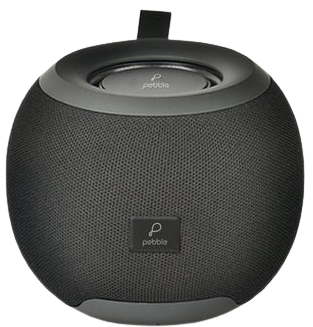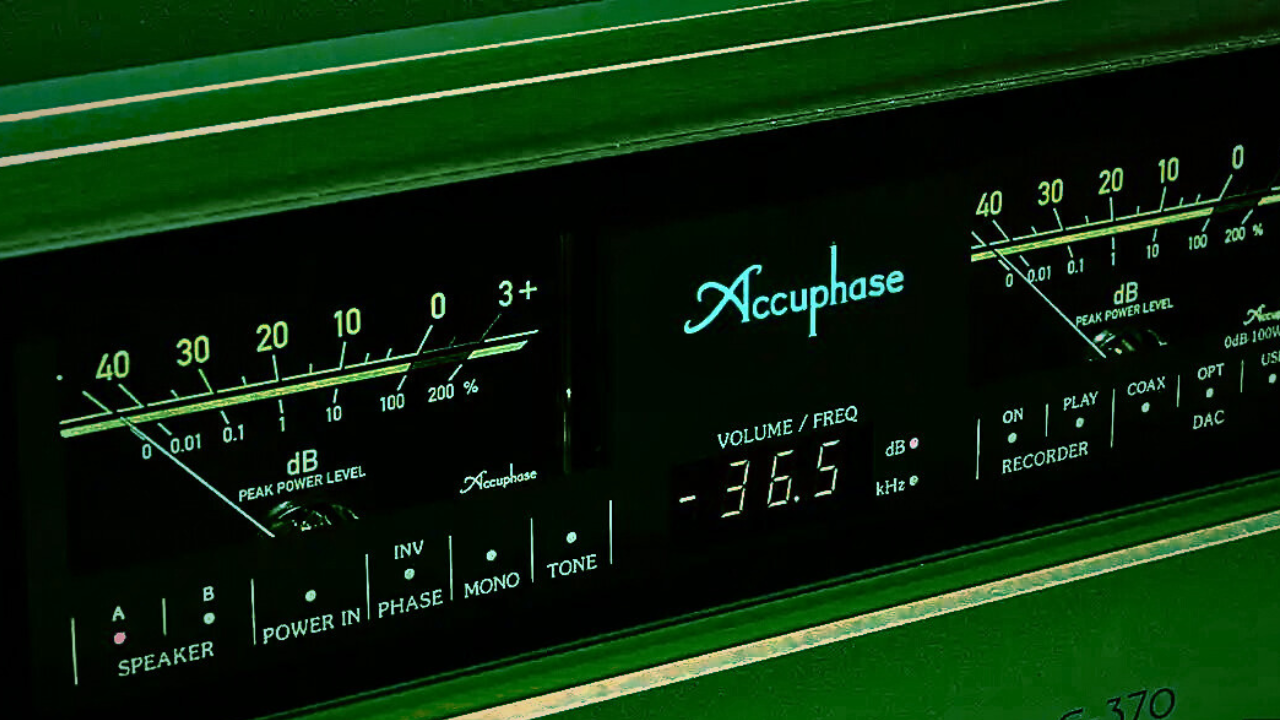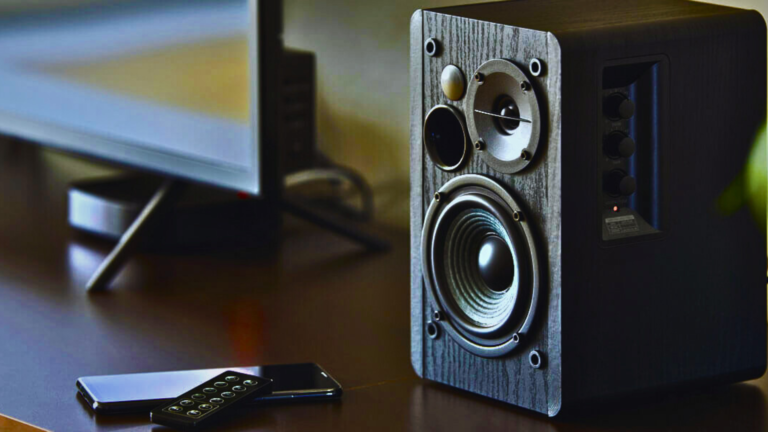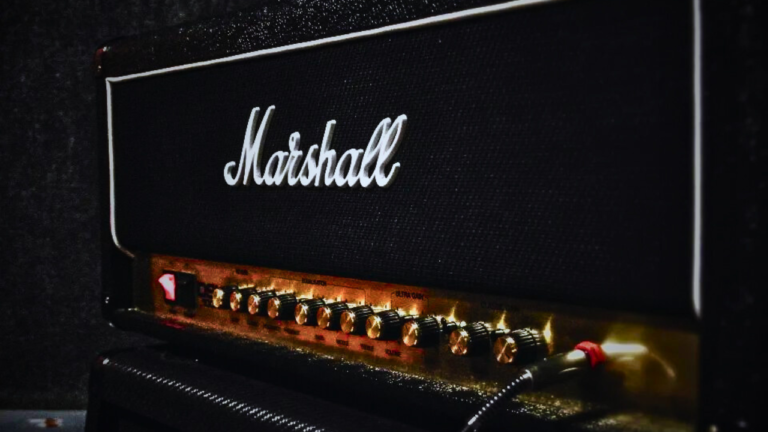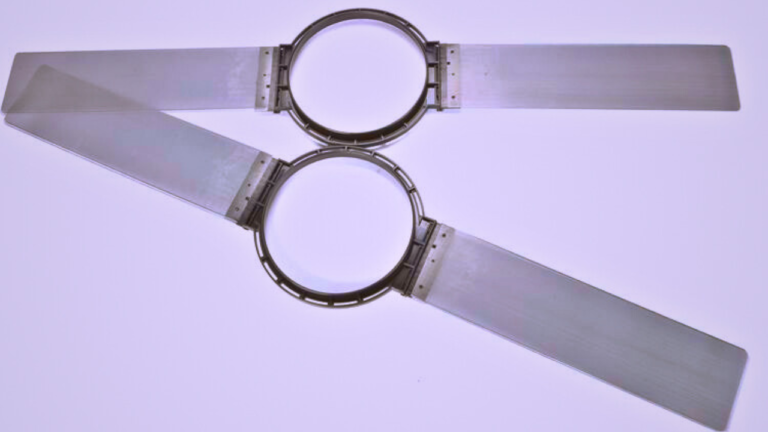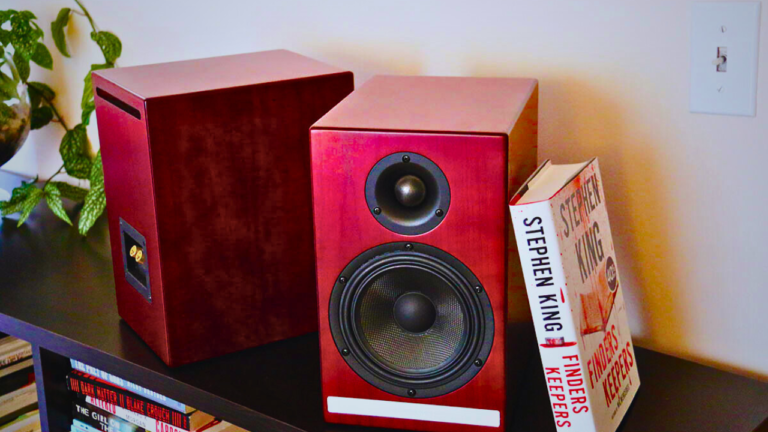What Happens If Speakers Are Out Of Phase?
Have you ever been to a live concert, or maybe you’ve simply cranked up your home stereo system and noticed something just doesn’t sound quite right? The volume is loud, the system is on, but things just sound off.
What you may have been experiencing without knowing it could be the curious effect of your speakers being ‘out of phase’. But what does this mean exactly, and how does it affect your sonic experience? Let’s dive in!
“A speaker is said to be ‘out of phase’ when the movement of the cones inside your speakers is not synchronized. Essentially, when one cone moves out, the other is moving in, distorting the sound.”
In a nutshell, having speakers out of phase means that they are playing sound waves that are not in sync. This results in a variety of effects that can significantly tamper with your audio experience.
- Reduced Bass: One of the most noticeable effects of out-of-phase speakers is a significant drop in bass. It might feel as if the speakers have lost their ‘oomph’.
- Strange Stereo Imaging: Out-of-phase speakers can create weird stereo imaging, making the music sound disoriented or unbalanced.
- The ‘Hollow’ or ‘Thin’ Sound: This is a sound that’s lacking in substance or body, which is often a result of speakers being out of phase.
These are just a few of the issues that may arise from your speakers being out of phase. A real bummer, right? But don’t worry; we’ve got you covered. Let’s dive into some more details and a few easy fixes to get your speakers back in phase and you back to enjoying your music just the way it should be enjoyed!
Read also: Why Are Magnets Used In Speakers To Form A Sound?
What does ‘out of phase’ mean in terms of audio and speakers?
When we talk about speakers being ‘out of phase’, we’re referring to the synchronization of the sound waves that they produce. Sound waves, just like waves in the ocean, have peaks and valleys. In an ideal scenario, the peaks of sound waves from each of your speakers meet at your listening position at exactly the same time, creating a harmonious and full sound. This is known as being ‘in phase’.
However, when speakers are ‘out of phase’, the peaks and valleys of the sound waves they produce don’t align perfectly. Think of it like this: when one speaker is at a peak, the other is in a valley. This results in those peaks and valleys effectively canceling each other out, much like two opposing waves in the ocean would. In more technical terms, when two waves are out of phase, they undergo destructive interference.
Having speakers that are out of phase doesn’t mean they are faulty or damaged. It’s simply a matter of the timing and synchronization of the sound waves they’re producing. Mistakes in wiring or placement can often lead to speakers being out of phase, but it’s typically a straightforward fix to get them back in sync.
- In essence, when speakers are in phase, they work together to produce sound that reaches your ears at the same time.
- When speakers are out of phase, the sound they produce does not synchronize, leading to sound waves canceling each other out.
What are the possible causes of speakers being out of phase?
More often than not, the problem of speakers being out of phase arises from incorrect wiring. But delving deeper, myriad factors can lead to this offbeat phenomenon, throwing the synchronized dance of your speakers out of rhythm. Let’s untangle some of these causes:
- Inconsistent wiring: This is the most common cause. If one speaker is wired normally (positive to positive, negative to negative) and the other is wired in reverse (positive to negative, negative to positive), your speakers may fall ‘out of phase’. As complex as it sounds, it can often be a mere oversight during setup.
- Different Speaker Models: Using different models of speakers within the same system can result in them being out of phase. This occurs due to variations in design and manufacturing, which influence how each speaker responds.
- Incorrect Speaker Positioning: Yes, even the position of your speakers can lead to phase issues. If speakers aren’t equidistant from the listener or vary significantly in orientation, they can be out of phase, causing disturbed sound perception.
- Signal Processing Issues: In more sophisticated sound setups, digital signal processors are used. These devices can cause phase errors if they aren’t correctly configured or if there’s a glitch in the system.
Understanding these common causes can save you much more than an unmelodious annoyance—it can save precious time and energy in troubleshooting your audio setup. Remember, the solution to an out-of-phase puzzle is often simpler than you think.
What are the common signs that your speakers may be out of phase?
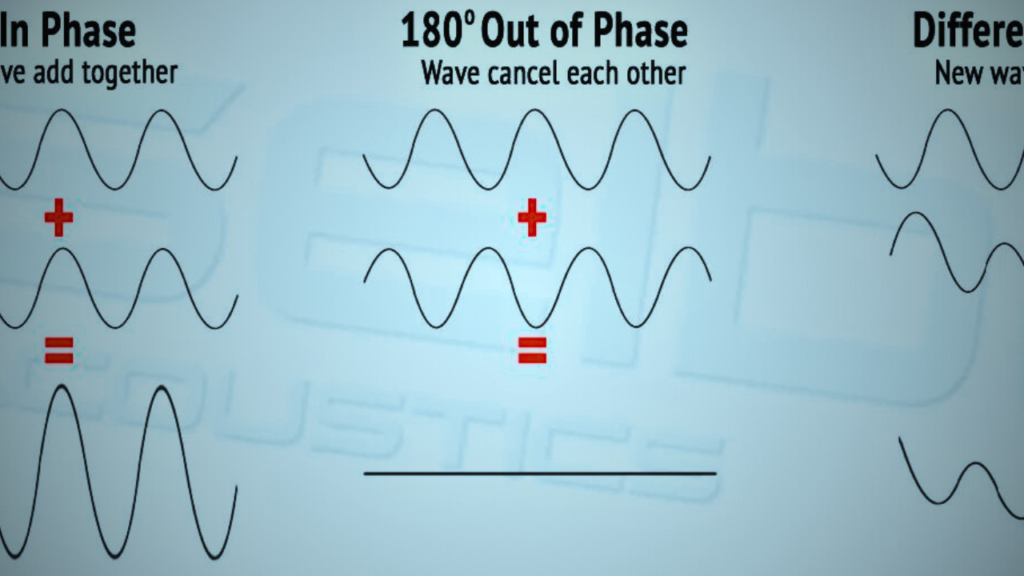
Identifying that your speakers are out of phase can be quite challenging, especially if you’re not familiar with the subtleties of audio quality. But fret not; we’re here to guide you. There are some telltale signs that you can look out for.
- Poor bass response: When speakers are in phase, they operate in unison to produce rich, full-bodied bass. However, if they’re out of phase, they cancel each other out, resulting in weak or thin bass sounds.
- Lack of stereo image: When speakers are in phase, you can perceive a clear distinction between sound coming from the left, right, and center. Out-of-phase speakers lose this feature, making the sound seem like it’s coming from a single central point rather than from distinct directions.
- Sound lacks punch: audio produced by in-phase speakers feels vibrant and alive, almost as if you could ‘feel’ it. Conversely, the sound from out-of-phase speakers is often described as dull and lifeless.
Keep in mind that these signs can be subtle and are best recognized by trained ears or with the help of certain audio tests. If the audio just doesn’t sound right, it’s always worth checking if your speakers are out of phase.
After you’ve determined that your speakers might be out of phase, it’s useful to know how to fix this issue. So, let’s dive into some remedies.
Read also: How To Connect Passive Speakers To Mixer?
What are the technical implications when speakers are out of phase?
When speakers are out of phase, they operate in a less effective manner, which cascades into a host of technical issues. Let’s unpack some of the implications that arise when your speakers fall out of phase and how they influence the overall working of your audio system.
The first and main technical implication is the cancellation and addition of sound waves. When the outputs of two speakers overlap, they either enhance each other or cancel each other out. If they’re exactly out of phase, complete cancellation can occur, resulting in silence. This phenomenon is known as ‘phase cancellation’.
Another common problem observed is decreased stereo imaging. When your speakers are out of phase, they create a diffuse and vague stereo image. Sound appears less focused, and you might struggle to pinpoint the origin of different elements of a song.
Moreover, speakers being out of phase can also lead to fluctuations in volume. Since the sound waves interfere with one another, you might realize that the volume of your music drops drastically at certain points and peaks abnormally at others.
Important! Consistent sound performance relies heavily on the phase alignment. Any discrepancies can lead to a disjointed and unsatisfying audio experience.
Finally, out-of-phase speakers impose an extra workload on the amplifier. In an attempt to compensate for the phase discordance, the amplifier continually adjusts its output, thus working harder and possibly decreasing its lifespan.
In conclusion, living with out-of-phase speakers means you’re accepting compromised sound quality and, potentially, a shorter life for your amplifier. But don’t worry! The good news is that, with a little care and attention, it’s an issue that’s quite fixable.
How does being out of phase affect the sound quality and the listener’s experience?
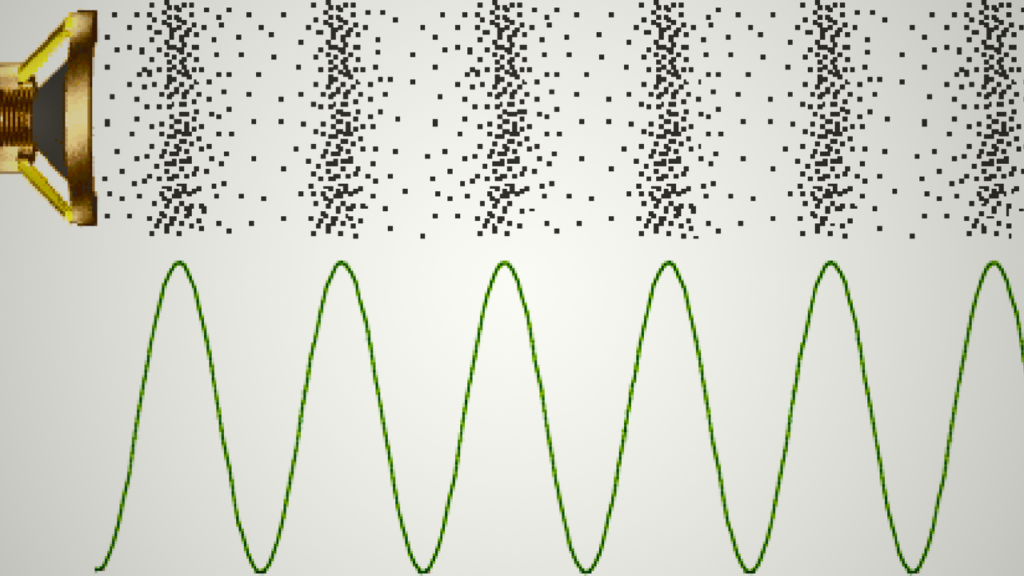
Perhaps you’ve experienced this before—dropping the needle on your favorite vinyl or pushing play on your beloved playlist, only to be greeted by a lackluster and flat sound. This poor representation of your favorite tunes may be the unfortunate result of your speakers being out of phase.
But how precisely does this technical mishap tamper with your sound quality and overall listening experience? Let’s dive right in.
The Impact on Sound Quality
When speakers are out of phase, their signals are not synchronized, meaning they don’t start and stop vibrating at the same time. They’re essentially not playing the same tune. This lack of harmony can drastically affect sound quality.
- Loss of Bass: The first and most noticeable effect is a distinct loss of bass. Imagine a drum set without its bass drum—it loses its punchiness and seems almost empty. That’s what music feels like on out-of-phase speakers. When two speakers are playing the same low-frequency audio signals but are not in phase, they end up canceling each other out, resulting in diminished bass.
- Diminished Stereo Effect: Out-of-phase speakers can essentially flatten the perceived stereo effect. When speakers are properly in phase, they create a wide, enveloping soundstage that gives music depth and dimension. But when they’re out of phase, your favorite 3D audio track suddenly sounds like it has been saddled with a 2D downgrade.
The Impact on Listener’s Experience
Who would love to sit front row in a concert only to hear muffled music? That’s somewhat how it feels when your speakers are out of phase.
- Reduced Audio Clarity: A distinct symptom of speakers that are out of phase is reduced audio clarity. You might struggle to distinguish between different instruments or even discern the lyrics of a song. This reduced clarity can make your favorite music seem less dynamic and satisfying.
- Localizing the Sound Source: Typically, in-phase speakers create an illusion of the sound coming from everywhere, providing an immersive experience. In contrast, out-of-phase speakers often make sounds appear to be coming directly from the two separate speakers, disrupting the immaterial wall of sound that delivers a concertlike experience.
In conclusion, having your speakers out of phase can change not just how you hear your music but also how you enjoy it. Sound isn’t solely about volume; it’s about the richness, clarity, and depth that bring music to life. So the next time you notice something off with your speakers, remember, you might need to check their phasing.
Conclusion
Understanding the implications of speakers being out of phase is crucial to ensuring an optimal audio experience. The delicate balance between two speakers working in harmony can be disrupted if they are out of phase, leading to a range of noticeable audio impairments, such as a loss of bass response and weird stereo imaging.
It’s important to remember that your ears are incredibly sensitive instruments capable of detecting these subtle changes. If something sounds off, chances are it’s more than just a figment of your imagination, and your speakers may be out of phase.
Always trust your ears and seek to resolve any issues that might be disturbing your listening experience.
Rectifying an out-of-phase situation is often as simple as swapping the speaker wires around to alter the polarity or adjusting the phase control on your subwoofer or receiver. However, more complex scenarios may require professional help or advice.
By taking control of your audio environment and ensuring your speakers are properly phased, you can drastically elevate your audio enjoyment, providing a much richer, more immersive, and more satisfying listening journey.
- Remember: Being meticulous about phase alignment when setting up your speakers can save you from confrontation with audio imperfections later on.
- Remember: When troubleshooting, consider phase issues as a potential problem; it’s an often overlooked factor that can seriously undermine sound quality.
In conclusion, while audio phase issues might appear daunting at first, they’re a surmountable challenge. By cultivating a good understanding of what happens when speakers go out of phase, you’re well-equipped to avoid and rectify the situation, ensuring you get the most out of your audio equipment.
FAQs
Is it dangerous if speakers are out of phase?
No, having your speakers out of phase isn’t dangerous, but it can significantly impact the quality of the sound, create a hollow or thin audio reproduction, and ruin your audio experience.
Can phasing issues damage the speaker?
While phasing issues won’t physically harm your speakers, they can strain them with the cancellation of certain frequency ranges due to wave interference. This can, over time, impact the lifespan of your speaker components.
How can I test if my speakers are out of phase?
There are several ways to test this. You can use a phase testing record or CD, a smartphone phase testing app, or you can do it manually by listening to the sound quality when you swap the speaker wire connections.
What do out-of-phase speakers sound like?
Simply put, out-of-phase speakers can deliver a sound that feels weak or lacks bass. Some describe it as a ‘thin’ or ‘distant’ sound, or as if the musicians are playing in separate rooms.
How do I fix speakers that are out of phase?
It’s as simple as swapping the wires back to their correct positions on the speaker terminals—simply swap the positive for the negative, and vice versa. But ensure you swap the wires on the same channel (for example, left to left or right to right).
Is it possible for just one speaker to be out of phase?
Yes, it only takes one speaker wired incorrectly for there to be phase issues. This might be hard to notice with a stereo sound, but with mono playback, it’s more apparent, as you’ll notice a lack of directionality or depth in the sound.
What is the phase switch on an amplifier?
The phase switch on an amplifier is a convenient tool that allows you to adjust the phase of your speakers without having to manually swap wires. This can be particularly useful if you’re noticing sound issues due to phase problems.
Do all speakers have a phase switch?
No, not all speakers have a phase switch. Usually, only subwoofers or high-end speakers come with a phase switch, as it’s more relevant for adjusting lower frequencies.
What does a phase-inverter do?
A phase inverter is a device used in some audio equipment that can reverse the phase of a signal. This can be useful in managing phase issues and optimizing sound quality by balancing the sound waves produced by the speakers.
Are phase issues noticeable with headphones?
Phase issues can be more noticeable with headphones since the left and right channels are isolated directly in each ear. When one earphone is out of phase, it can create an odd sense of spatial distribution or imbalance in the soundstage.

Hey there! I’m Henry Jack, the voice behind speakerrealm.com, your ultimate destination for everything speakers. Whether you’re a seasoned audio enthusiast or just starting to explore the world of sound, you’ve come to the right place.
At Speaker Realm, I dive deep into the realm of speakers, bringing you comprehensive reviews, insightful guides, and the latest trends in the industry. From floor-standing behemoths to compact bookshelf wonders, I cover it all.
I’m passionate about helping you find the perfect speakers to elevate your audio experience. Whether you’re setting up a home theater, upgrading your sound system, or just looking for some quality audio gear, I’ve got you covered.
But Speaker Realm isn’t just about technical specs and performance metrics—it’s also about the art and science of sound. I explore topics like acoustic design, speaker technology, and the impact of audio on our lives.
So whether you’re a casual listener or a hardcore audiophile, join me on this journey through the world of speakers. Let’s turn up the volume and explore the endless possibilities of sound together at speakerrealm.com!
